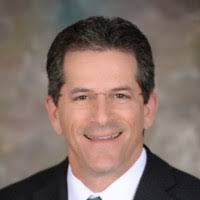By Susan N. Hanrahan, ASAHP President
In my message in the November 2017 issue, I indicated that I will be asking some of you to send a photo and answer a series of “fun” questions to be shared with our membership so that we can continue our collegiality through our newsletter. The 13th of many profiles and the fifth in 2019 is presented as follows:
Name and Title: Ken Johnson, PhD, FASAHP
Place of birth: Blackfoot, Idaho
University: Weber State University
How long have you been in your position? 13 years
What’s the value of a university education? Increased options, increased income
What is the value of ASAHP? Making friends, sharing solutions to problem.
Your philosophy on education in seven words: To help learners learn how to learn.
If I could teach in another field, which one and why? Occupational Psychology – it’s another field that promotes wellness in a variety of ways.
Before I retire I want to: I think I’m good...just increase my retirement fund.
In college, I was known for: Being part of the International Folkdancers as a band member and dancer. What music is playing in my car/office? Classic rock
The last book I read for fun was: Saints
My favorite trip was: Edinburgh, Scotland
If I could travel anywhere it would be: Back to Northern England and Scotland.
Four people I’d take to coffee or have a glass of wine with: I don’t do either of those, but I’d love to visit with some of my ancestors.
The best advice I ever received was: I’ve received too much good advice to just pick one thing.
My hobby is: Woodworking, golfing, fishing
My passion is: My family
My pet peeve is: Bad drivers, I suppose.
A perfect day is: In a peaceful setting with my family
Cats or dogs? Dogs, although we have cats.
E-book or hardback? Hardback
Beach or mountains? I live in and love the mountains. I like to visit the beach.
I wish I could: Travel more.
Only my friends know I: No comment
My favorite saying is . . . on my wall: “Med dig vill jag bli gammal och lite halv blind.” (You’ll have to look it up).
More Articles from TRENDS May 2019
LANGUAGE TRANSMISSION AND TRANSLATION
Examples are provided of how terminological inexactitudes and differences in language can influence understanding and quality of patient care. Read More
BIPARTISAN HEALTH LEGISLATION
Describes a bipartisan bill in Congress to reauthorize workforce programs under Title VII of the Public Health Service Act and action in the House of Representatives to fund the Departments of Labor, Health and Human Services, Education, and Related Agencies (Labor-HHS). Read More
HEALTH REFORM DEVELOPMENTS
Discusses health challenges in rural areas, Medicare for All legislation, and predictive analytics to address social determinants of health. Read More
DEVELOPMENTS IN HIGHER EDUCATION
Describes an attempt to correct a mistake in the Tax Cuts and Jobs Act of 2017; re-introduction of the Student Loan Borrower Bill of Rights Act of 2019; a Trump administration proposal to reduce the Pell Grant surplus; and laws passed by states involving student loan companies. Read More
QUICK STAT (SHORT, TIMELY, AND TOPICAL)
Pregnancy-Related Deaths, United States, 2011-2015
Severe Joint Pain And Physical Inactivity Among Adults With Arthritis-United States
Wireless Sensor System To Monitor Babies In The Neonatal Intensive Care Unit (NICU)
Electric Field-Based Dressing Disrupts Bacterial Biofilm Infection To Restore Healing Read More
AVAILABLE RESOURCES ACCESSIBLE ELECTRONICALLY
Advancing Patient-Centered Care For Individuals With Multiple Chronic Conditions
Effects Of Early Care And Education On Children’s Health
Addressing Social Determinants Of Health Through Housing Improvements Read More
RANDOMIZED CLINICAL TRIALS AND THE WEIGHT OF A SOUL
Although progress has been made in research to measure the effectiveness of clinical interventions, similar lapses found in a study from the early 20th century can be observed in studies conducted today. Read More
VALIDATION OF DIGITAL HEALTH SOLUTIONS
Refers to how confidence remains low in the production of validated digital health solutions and how more standardized and transparent kinds of validation are needed. Read More





